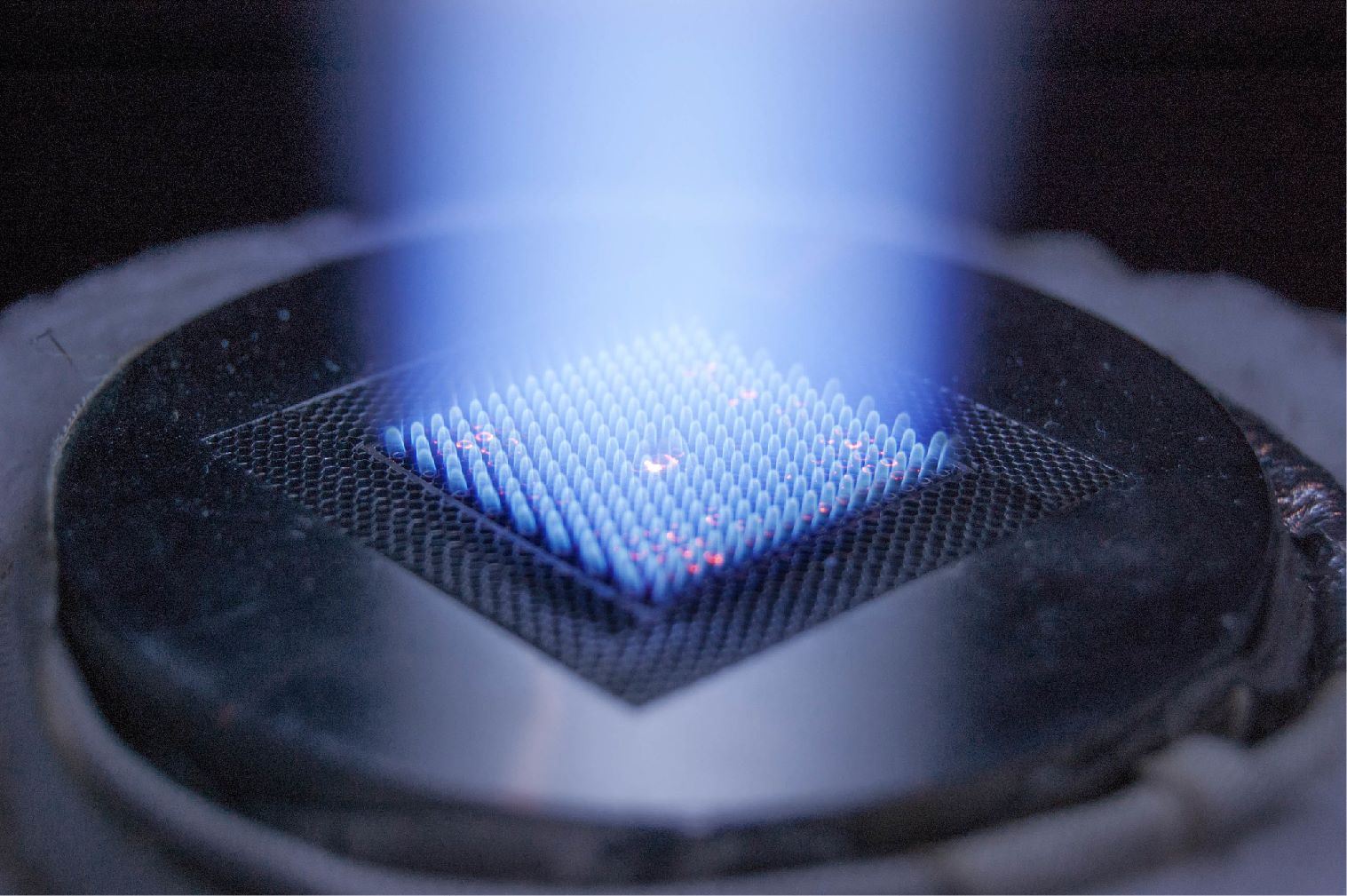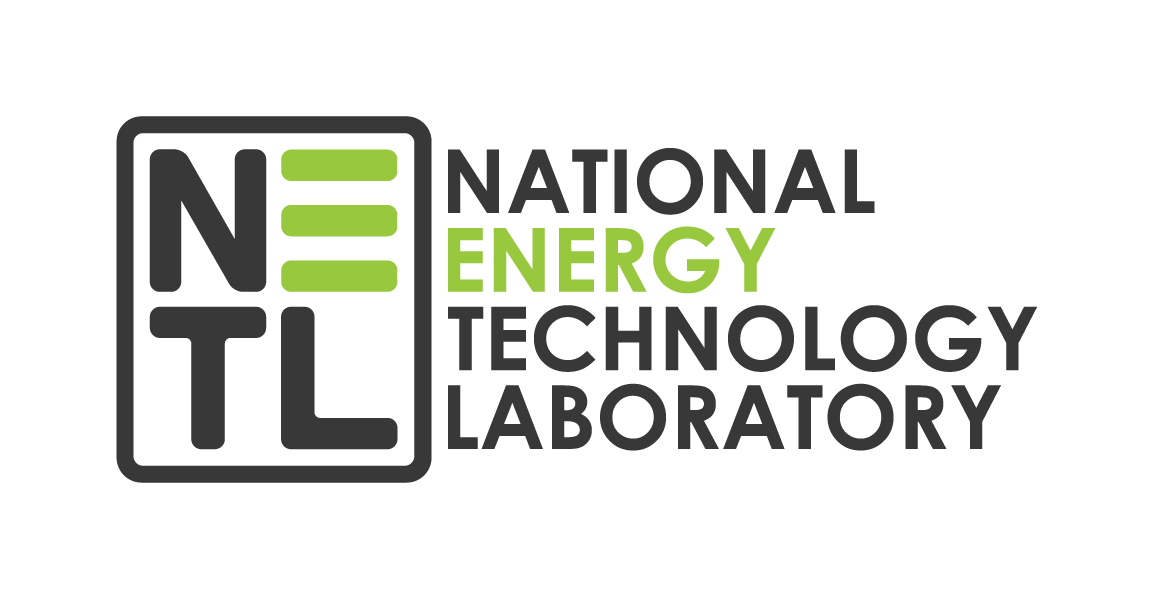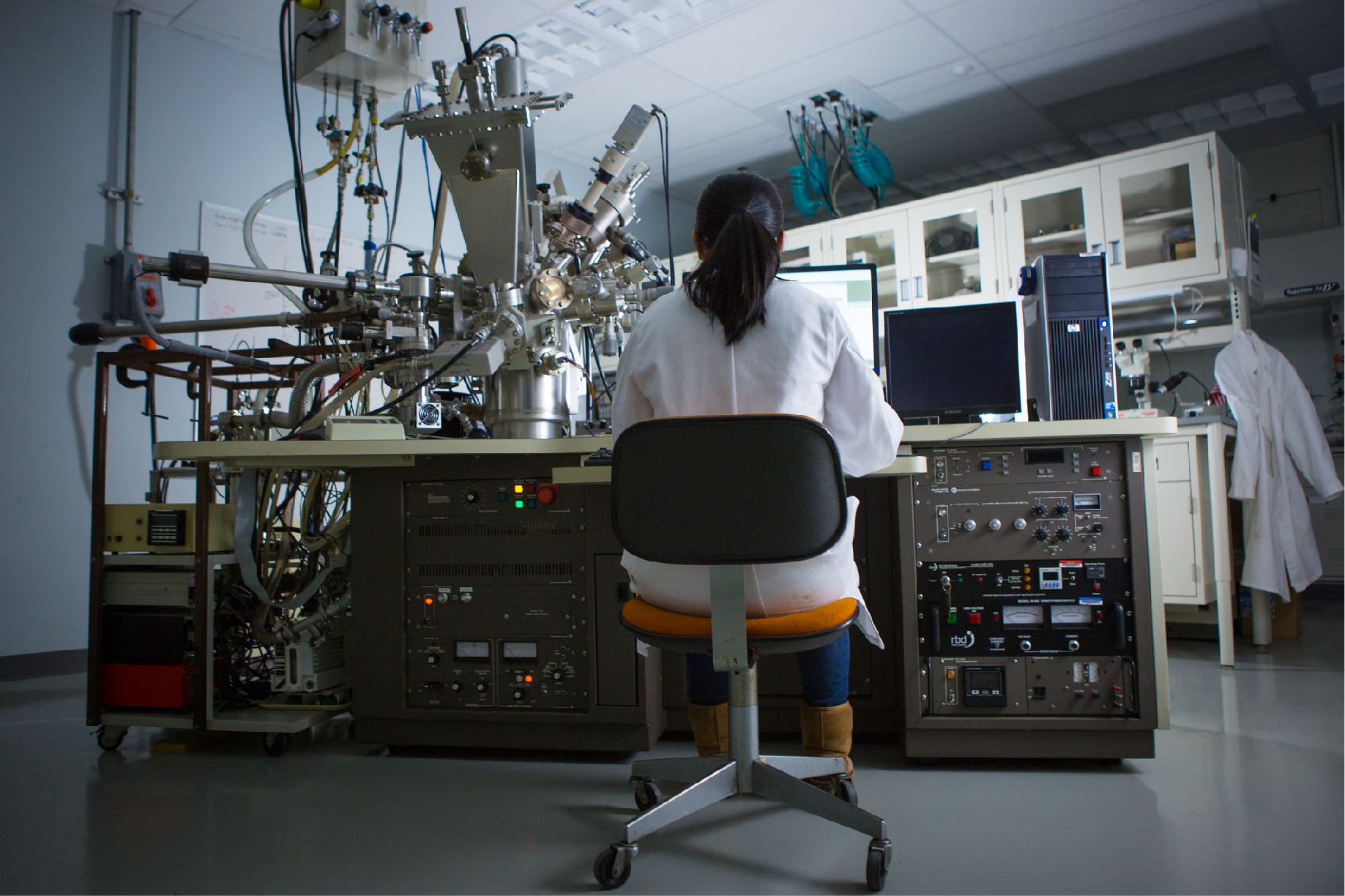NETL researchers are helping design better catalysts for chemical reactions that convert methane at the site of natural gas well flaring into valuable chemicals using microwave heating, according to an article in the ACS journal Energy and Fuels.
Gas flaring is the controlled burning of the associated natural gas that accompanies oil during extraction. While associated gas flaring occurs for a variety of reasons, much of the flaring is due to the limited pipeline takeaway capacity at remote well sites. In the United States alone, around 10 billion cubic meters was flared in just 2023 — a 21% increase over the previous year. That volume is the equivalent to the annual heating needs of one million U.S. homes.
NETL’s Daniel Haynes works on energy conversion engineering solutions and was a co-author of the article.
“A promising solution to avoid wasting significant amounts of this domestic resource lies in the use of the flare gas in compact, modular systems that converts it into transportable, value-added products directly at the well site,” he said. “The NETL research is leading to a better understanding of how to design robust catalysts for a chemical process that uses microwaves to convert methane, the primary component of natural gas, into aromatic hydrocarbons like benzene, toluene and xylenes along with hydrogen gas without significant catalyst deactivation. Those catalysts must be able to stand up to the demands of microwave heating and a challenging reaction environment.”
That chemical process is known as methane dehydroaromatization (MDA).
Developing novel catalysts for process-intensified reaction systems, such as microwave-assisted conversion, is a key focus of NETL’s Center for Microwave Chemistry (CMC).
Catalyst deactivation is when a catalyst, the substance that speeds up the chemical reactions, loses its effectiveness over time leading to reduced reaction rates or even complete cessation of the reaction.
NETL investigated the deactivation of a catalyst known as a molybdenum supported H-ZSM-5 zeolite in MDA under microwave-heated conditions compared to conventional heating.
Microwaves, a type of electromagnetic radiation like radio waves, interact with materials and cause molecules to rotate and vibrate, which causes friction and collisions between molecules that generates heat. Unlike traditional chemical processes that rely on indirect heat transfer from fossil fuel combustion, microwave heating generates heat directly through the interaction between microwaves and the solid catalyst. This direct approach offers improved heating rates and efficiency, potentially leading to more cost-effective chemical production. However, further research is required to clarify catalyst behavior in microwave environments leading to development of more effective materials.
Haynes said MDA is a high-temperature process that takes place at 700 degrees Celsius or higher.
“While the microwave-assisted process achieved higher benzene yields, the catalyst also experienced faster deactivation,” he explained. “Our work helped us understand part of the reason the catalyst deactivation was so fast when it was exposed to microwaves, which has helped us find ways to improve catalyst performance in microwave-enhanced MDA reaction.”
He said more efficient catalysts can absorb microwave energy and improve yields, reduce coke formations — carbon deposits that deactivate catalysts — and enable lower reaction temperatures.
In addition to Haynes, the article, titled “Deactivation of Mo/H-ZSM-5 in Microwave-Assisted and Thermal-Driven Methane Dehydroaromatization,” was authored by NETL’s Swarom Kanitkar, Xinwei Bai, Biswanath Dutta and Evgeniy Myshakin.
NETL is a DOE national laboratory dedicated to advancing the nation's energy future by creating innovative solutions that strengthen the security, affordability and reliability of energy systems and natural resources. With laboratories in Albany, Oregon; Morgantown, West Virginia; and Pittsburgh, Pennsylvania, NETL creates advanced energy technologies that support DOE’s mission while fostering collaborations that will lead to a resilient and abundant energy future for the nation.




